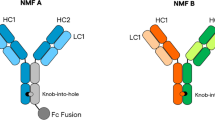Abstract
The calcium phosphate [Ca3(PO4)2] precipitation was used for improving the clarification efficiency in harvest process of the monoclonal antibody (mAb) containing cell culture fluid (CCF) with high turbidity and product titer. The flocculation conditions (concentration, addition order of flocculants, pH, and operation time), and the effect of flocculants on the mAb physical chemical properties (such as distribution of charge variants and aggregates) and process-related impurities removal (such as DNA and CHOP) were evaluated in this study. The results showed that the turbidity of CCF supernatant was significantly reduced at pH 7, 120 min with addition of phosphate ions first, while a high mAb recovery yield was kept in the CCF supernatant after flocculation. Addition of calcium ions at 15–60 mM was sufficient for flocculation in this study. A relationship between turbidity/mAb recovery yield and the concentration of calcium ions was established. More than 85% DNA in the CCF were effectively removed by the addition of optimal concentration of flocculants. Flocculation process of Ca3(PO4)2 is an effective pretreatment method in purification processes of mAbs from the CCF with high turbidity and product titer.








Similar content being viewed by others
References
Reichert JM, Valge-Archer VE (2007) Development trends for monoclonal antibody cancer therapeutics. Nat Rev Drug Discov 6:349–356
Adams GP, Weiner LM (2005) Monoclonal antibody therapy of cancer. Nat Biotechnol 23:1147–1157
Wurm FM (2004) Production of recombinant protein therapeutics in cultivated mammalian cells. Nat Biotechnol 22:1393–1398
Kelley B (2007) Very large scale monoclonal antibody purification: the case for conventional unit operations. Biotechnol Progr 23:995–1008
Birch JR, Racher AJ (2006) Antibody production. Adv Drug Deliv Rev 58:671–685
Pollock J, Ho SV, Farid SS (2013) Fed-batch and perfusion culture processes: economic, environmental, and operational feasibility under uncertainty. Biotechnol Bioeng 110:206–219
Clincke MF, Molleryd C, Zhang Y, Lindskog E, Walsh K, Chotteau V (2013) Very high density of CHO cells in perfusion by ATF or TFF in WAVE bioreactor. Part I. Effect of the cell density on the process. Biotechnol Progr 29:754–767
Kelly W, Scully J, Zhang D, Feng G, Lavengood M, Condon J, Knighton J, Bhatia R (2014) Understanding and modeling alternating tangential flow filtration for perfusion cell culture. Biotechnol Progr 30:1291–1300
Liu HF, Ma J, Winter C, Bayer R (2010) Recovery and purification process development for monoclonal antibody production. mAbs 2:480–499
Buyel JF, Fischer R (2014) Flocculation increases the efficacy of depth filtration during the downstream processing of recombinant pharmaceutical proteins produced in tobacco. Plant Biotechnol J 12:240–252
Riske F, Schroeder J, Belliveau J, Kang X, Kutzko J, Menon MK (2007) The use of chitosan as a flocculant in mammalian cell culture dramatically improves clarification throughput without adversely impacting monoclonal antibody recovery. J Biotechnol 128:813–823
Brodsky Y, Zhang C, Yigzaw Y, Vedantham G (2012) Caprylic acid precipitation method for impurity reduction: an alternative to conventional chromatography for monoclonal antibody purification. Biotechnol Bioeng 109:2589–2598
Ma J, Hoang H, Myint T, Peram T, Fahrner R, Chou JH (2010) Using precipitation by polyamines as an alternative to chromatographic separation in antibody purification processes. J Chromatogr B 878:798–806
Peram T, McDonald P, Carter-Franklin J, Fahrner R (2010) Monoclonal antibody purification using cationic polyelectrolytes: an alternative to column chromatography. Biotechnol Progr 26:1322–1331
Coffman JL, Shpritzer RI, Vicik SM (2010) Separation methods. US Patent 7855280
Gottschalk U (2008) Bioseparation in antibody manufacturing: the good, the bad and the ugly. Biotechnol Progr 24:496–503
McDonald P, Victa C, Carter-Franklin JN, Fahrner R (2009) Selective antibody precipitation using polyelectrolytes: a novel approach to the purification of monoclonal antibodies. Biotechnol Bioeng 102:1141–1151
Chanutin A, Curnish RR (1960) The precipitation of plasma proteins by short-chain fatty acids. Arch Biochem Biophys 89:218–220
Gagnon P (2012) Technology trends in antibody purification. J Chromatogr A 1221:57–70
Weir S, Ramsden DK, Hughes J, Le Thomas F (1993) The flocculation of yeast with chitosan in complex fermentation media: the effect of biomass concentration and mode of flocculant addition. Biotechnol Technol 7:199–204
Hughes J, Ramsden DK, Symes KC (1990) The flocculation of bacteria using cationic synthetic flocculants and chitosan. Biotechnol Technol 4:55–60
Aunins JG, Wang DI (1989) Induced flocculation of animal cells in suspension culture. Biotechnol Bioeng 34:629–638
Roush DJ, Lu Y (2008) Advances in primary recovery: centrifugation and membrane technology. Biotechnol Progr 24:488–495
Romero J, Chrostowski J (2010) Method of isolating biomacromolecules using low pH and divalent cations. US Patent 0145022
Westoby M, Chrostowski J, de Vilmorin P, Smelko JP, Romero JK (2011) Effects of solution environment on mammalian cell fermentation broth properties: enhanced impurity removal and clarification performance. Biotechnol Bioeng 108:50–58
Satzer P, Tscheließnigg A, Sommer R, Jungbauer A (2014) Separation of recombinant antibodies from DNA using divalent cations. Eng Life Sci 14:477–484
Jin M, Szapiel N, Zhang J, Hickey J, Ghose S (2010) Profiling of host cell proteins by two-dimensional difference gel electrophoresis (2D-DIGE): implications for downstream process development. Biotechnol Bioeng 105:306–316
Pham L, Ye H, Cosset FL, Russell SJ, Peng KW (2001) Concentration of viral vectors by co-precipitation with calcium phosphate. J Gene Med 3:188–194
Acknowledgements
The authors would like to thank the colleagues from Mabworks Biotech Co., Ltd. for their help, such as Miao Zhu, Chunyang Jin, and Guangkai Zhu, for their help in flocculation operation experiments, and Chenying Xie, Chuan He, and Weihui Fu for their help in analytical assays.
Author information
Authors and Affiliations
Corresponding author
Rights and permissions
About this article
Cite this article
Chen, G., Su, Z., Li, F. et al. Application of calcium phosphate flocculation in high-density cell culture fluid with high product titer of monoclonal antibody. Bioprocess Biosyst Eng 40, 703–714 (2017). https://doi.org/10.1007/s00449-017-1735-9
Received:
Accepted:
Published:
Issue Date:
DOI: https://doi.org/10.1007/s00449-017-1735-9




